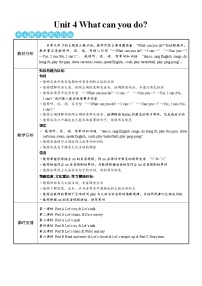

小学人教版 (PEP)Unit 2 Last weekend Part A教学设计及反思
展开
这是一份小学人教版 (PEP)Unit 2 Last weekend Part A教学设计及反思,共5页。
本课是PEP小学英语六年级起点第二册Unit 2第一课时,主要学习在情景中恰当运用句型“—Hw was yur weekend? —It was ...” “—What did yu d? —I ...” “Did yu d anything else?”提问及作答。老师将通过多种教学活动巩固重点单词和句型,使学生掌握本节课知识点。
课时目标
知识与能力
通过读懂Let’s try板块的内容,对听力部分的重点信息进行预测,初步感知一般现在时、一般将来时和一般过去时的不同语用环境。
通过听录音,能够解答Let’s try板块的问题,选出正确的答案。
能够在图片和教师的帮助下理解对话大意,回答对话下面的问题。
能够用正确的语音、语调及意群朗读对话,并能在小组中进行角色表演。
能够听、说、读、写并在情景中恰当运用句型“—Hw was yur weekend? —It was ...” “—What did yu d? —I ...” “Did yu d anything else?”谈论上周末的活动。
能够在语境中理解新单词“stayed, drank, watched, cleaned, washed”的意思,并能正确发音。
能够描述自己上周末和下周末的活动安排。
过程与方法
通过图片生动形象地帮助学生理解词汇含义,操练核心词汇和句型,为接下来的学习做好铺垫。教师设计不同的活动,逐步引导学生学习,从单词到词组再到句型结构,层层递进。
情感态度价值观
通过学习,让学生认识到时间的重要性,学会合理安排周末时间,劳逸结合,适当放松,为下周做好准备。
教学重难点
教学重点
1. 能够理解和掌握本课时的重点单词及句型。
2. 能够在情景中运用句型“—Hw was yur weekend? —It was ...” “—What did yu d? —I ...” “Did yu d anything else?”询问并回答上周末的活动。
教学难点
能够在情景中灵活运用核心句型谈论上周末和下周末的活动安排,达到语篇输出的目的。
教学准备
PPT课件、课文录音、视频、卡片等。
教学媒体选择
多媒体,录音。
教学活动
歌曲
角色扮演
教学过程
Step 1: Warm-up & Lead-in
1. Greetings.
T:In this class, I hpe yu can be cnfident(☆), pen-minded(☆☆), and especially creative(☆☆☆).
2. Enjy a sng— Last weekend
3. Lead-in.
Present the main scene.
T: These are Mike and Jhn. Here we can see their blgs. Lk! What day was it?
Ss: It was Saturday and Sunday.
T: Great! This was last weekend.
Present “am/is—was” and ask students t state the differences in their usage.
Step 2: Presentatin
1. Listen and circle.
(1)T: Sarah and Mike are talking abut this weekend.
Shw the questins f “Let’s try”.
Lead students t predict and guess the key wrds.
(2) Play the recrding f “Let’s try”. Let students try t circle the right answers.
(3) Students read the dialgue and check the answers.
Then ask tw students t tell their judging clues.
Q1:Sarah and Mike are talking n Sunday, because Sarah said “Tmrrw is Mnday.”
Q2: Mike is ging t call his grandparents, because Mike said “I’m ging t call my grandparents.”
Highlight the key sentences f the dialgue. Ask students t learn t read and lead them t understand the simple future tense.
(4)T: Mike said his weekend was great. What did he d last weekend?
Ss: He cleaned his rm and watched TV.
Present the activities Mike did last weekend. Read the new wrds. Lead students t distinguish the simple past tense frm the simple present tense.
2. Watch and answer.
T: Mike is talking with his grandpa n the phne. Watch the vide f “Let’s talk” and answer: What are they talking abut?
Ss: They are talking abut their weekends.
T: Hw was Mike’s grandpa’s weekend?
Ss: It was great.
T: We can als say “It was gd/fine/OK/fantastic/wnderful/nice…
Teach the sentences “—Hw was Mike’s grandpa’s weekend? —It was…”
3. Read and answer.
(1) Students read the dialgue and answer what Mike’s grandpa/ Mike did last weekend.
(2) Observe and summarize.
T: Observe the wrd-frmatin f the verbs. What’s in cmmn?
Students express the clues they find ut.
Then the teacher makes a brief summary: the usage and the wrd-frmatin f the simple past tense.
Highlight the unusual wrd-frmatin f the wrd “drank”.
(3) Teach the sentences “—What did yu d last weekend? —I cleaned my rm/ watched TV/ drank tea.” Let students pay attentin t the past tense f verbs.
4. Get mre details.
(1)T: Mike’s grandpa drank tea in the afternn. Maybe he likes tea. Did yu drink tea last weekend? What else did yu drink?
Ss: Yes, I did. I drank sme water/ milk/ juice/ cla/ cffee… / N, I didn’t.
Present “else” and the key sentence structure “What else did yu…?”. Lead students t read them crrectly.
(2)T: Mike and his grandpa bth watched TV last weekend. What TV prgram did Mike watch?
Ss: He watched sme children’s shws n TV.
T: D yu like children’s shws? What TV prgram did yu watch last weekend?
Ss: Yes, I d. I watched cartns/sprts prgrams/a film… /N, I dn’t.
Step 3: Practice
1. Practice.
Shw the key wrds and sentences in this perid.
2. Read and act.
(1)Let students listen and read after the recrding.Remind them t pay attentin t the prnunciatin and the intnatin.
(2)Let students practice the dialgue in pairs.
(3)Act ut.
3. Fill the blanks.
Lead students t fill in the blanks accrding t the cntext.
Firstly, make a mdel.
Then let students wrk in pairs.
At last, check the answers.
Step 4: Cnslidatin & Extensin
1. Read and act.
(1)Let students listen and read after the recrding.Remind them t pay attentin t the prnunciatin and the intnatin.
(2)Let students practice the dialgue in pairs.
(3)Act ut.
2. Can yu say?
T: Can yu cmplete the whle dialgue?
Lead students t fill in the blanks accrding t the cntext. Firstly, make a mdel. Then let students wrk in pairs.
At last, check the answers.
板书设计
Unit 2 Last weekend
stay—stayed watched—watched clean—cleaned
Hw was yur weekend? I’m fine.
What did yu d? I...
Did yu... Yes/N.
作业设计
学会唱本课歌曲
教学反思
1. 由歌曲引入,带领学生预习新知,激发学生的学习兴趣。
2. 呈现活动设计丰富,易操作,且具备层次感,有效地提升了学生的核心素养。
3. 以学生为本,以解决问题为导向,引导学生自主学习。
4. 突出语用功能,联系学生生活中的实际情况,设置多个环节,环环相扣,层层深入,帮助学生在真实情景中自然地使用所学语言。
相关教案
这是一份小学英语人教版 (PEP)五年级上册Unit 6 In a nature park Part B教学设计,共8页。
这是一份小学英语人教版 (PEP)五年级上册Unit 6 In a nature park Part A教案及反思,共9页。
这是一份小学英语人教版 (PEP)五年级上册Unit 5 There is a big bed Part B教案设计,共9页。










